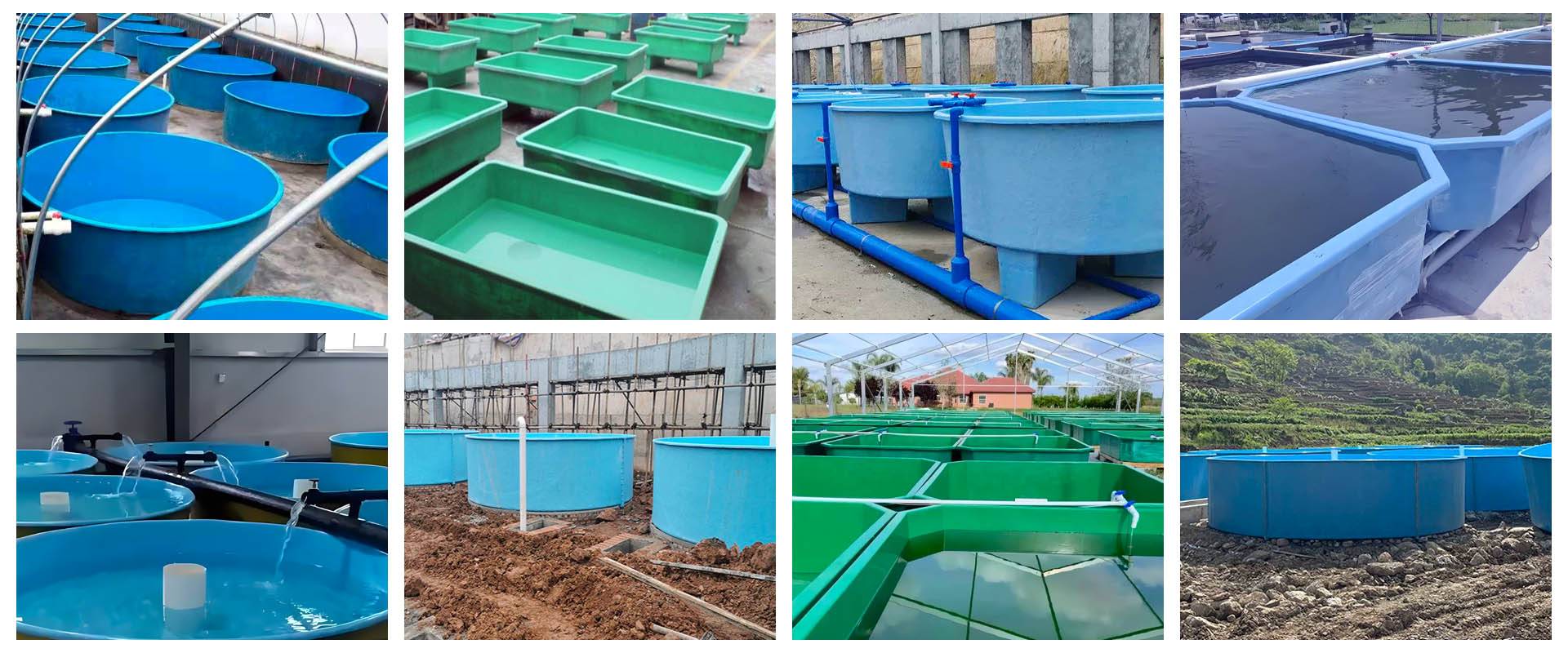Guide to Choosing FRP Fish Tanks
Welcome to the world of aquaculture and advanced fishkeeping! If you’re looking beyond standard glass or acrylic aquariums, an FRP tank is a fantastic and professional-grade option. This guide will walk you through everything you need to know as a beginner.
1. Understand What FRP Tanks Are
FRP fish tanks are made from a composite material consisting of a polymer matrix (usually polyester, vinyl ester, or epoxy) reinforced with glass fibers. This combination results in a tank that is:
- Strong and Durable: Resistant to impact, corrosion, and weathering.
- Lightweight: Easier to transport and install compared to concrete or metal tanks.
- Smooth Interior: The gel-coated surface is non-porous, making it easy to clean and resistant to algae buildup.
- Customizable: Can be molded into various shapes and sizes.
2. Determine Your Tank’s Purpose
The intended use will dictate the size, shape, and features you need:
- Aquaculture (Fish Farming): Focus on water volume, aeration compatibility, and ease of harvesting.
- Holding Tanks (e.g., at fisheries or markets): Prioritize water quality maintenance and fish health during transport or storage.
- Research or Hatchery Use: May require specific dimensions, viewing windows, or integration with monitoring systems.
3. Choose the Right Size and Shape
- Size (Volume): Calculate the required water volume based on the species, number of fish, and desired stocking density. Common sizes range from 500 liters to over 50,000 liters.
- Shape:
- Round Tanks: Promote excellent water circulation and self-cleaning properties (vortex effect), ideal for intensive aquaculture.
- Rectangular or Square Tanks: Maximize space utilization, suitable for hatcheries or limited spaces.
- Oval or D-Shaped Tanks: Offer a compromise between water movement and space efficiency.
4. Consider Key Features
- Gel Coat: Ensure the tank has a food-grade, UV-resistant gel coat on the interior to prevent degradation and ensure fish safety.
- Drain and Overflow Systems: Look for efficient central drains (especially in round tanks) and overflow pipes to manage water levels and remove surface waste.
- Aeration Compatibility: Verify the tank design allows for easy installation of air stones, diffusers, or oxygen cones.
- Access Points: Hatches or manholes facilitate cleaning and fish handling.
- Legs or Stand: Determine if the tank needs an integrated or separate support structure, especially for above-ground installations.
5. Evaluate Quality and Manufacturer
- Reinforcement: Thicker walls and adequate fiberglass layers indicate better strength and longevity.
- Seams and Joints: Seamless tanks are preferable. If seams exist, they should be well-bonded and leak-proof.
- Certifications: Check for compliance with relevant standards (e.g., food safety, environmental regulations).
- Warranty and Support: Choose a reputable manufacturer offering a solid warranty and technical support.
6. Installation and Maintenance Tips
- Foundation: Install the tank on a level, stable, and supportive base (e.g., concrete slab, compacted gravel with sand bed).
- Handling: Avoid dragging or dropping the tank; use proper lifting equipment.
- Cleaning: Regularly clean the tank with non-abrasive tools and avoid harsh chemicals that could damage the gel coat.
- Inspection: Periodically check for cracks, delamination, or wear, especially around fittings.
7. Compare Costs
While FRP tanks have a higher upfront cost than some alternatives (like plastic), their long lifespan and low maintenance often make them more cost-effective in the long run. Consider the total cost of ownership, not just the purchase price.
By carefully considering these factors, you can select an FRP fish tank that meets your specific needs, ensuring a healthy environment for your fish and efficient operation for your project.
FRP vs. Other Common Tank Materials
| Feature | FRP | Polyethylene (Plastic) | Concrete | Glass |
|---|---|---|---|---|
| Durability | Excellent | Good (can become brittle) | Excellent | Poor (fragile) |
| Weight | Light | Very Light | Very Heavy | Very Heavy |
| Customization | Very High | Low (pre-made sizes) | High | Low |
| Cost | High | Low | Medium-High | Medium |
| Portability | Moderate | Easy | Impossible | Impossible |

Email : cn@chinaestop.cn
Whatsapp✆:+86 15350598856
Web: www.chinaestop.cn
————————————————————————————————————————
“ Wish to be your best partner in China! Welcome to visit our company”
